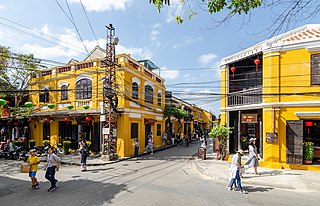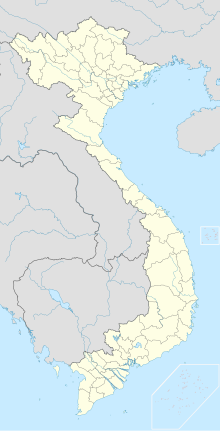
On the first tier, Vietnam is divided into fifty-eight provinces and five municipalities under the command of the central government. Municipalities are the highest-ranked cities in Vietnam. Municipalities are centrally-controlled cities and have special status equal to the provinces.
Articles related to Vietnam and Vietnamese culture include:

Đồng Nai is a province in the Southeast region of Vietnam, located east and northeast of Ho Chi Minh City (Saigon). The capital city and the largest city in Đồng Nai is Biên Hòa.

Quảng Nam is a coastal province located in the northernmost coastal region of South Central and Central Vietnam. Quang Nam is located in the key economic region of the Central region. In 1997, the province was re-established on the basis of separating Quang Nam - Da Nang province into two administrative units, Quang Nam province and Da Nang city. Currently, the province has two cities: Tam Ky city and Hoi An city. Quang Nam province is home to the most world cultural heritages in the country with two world cultural heritages recognized by UNESCO: Hoi An ancient town and My Son temple relic area. Hoi An and the Cham Islands are part of UNESCO Biosphere.

Cà Mau is a province of Vietnam, named after its capital city. It is located in the Mekong Delta of southern Vietnam, and is the southernmost of Vietnam's 63 provinces. It is bordered to the north by Kiên Giang and Bạc Liêu provinces, to the west by the Gulf of Thailand, and to the south and east by the South China Sea.

National Route 1, also known as National Route 1A, is the trans-Vietnam highway. The route begins at km 0 at Hữu Nghị Quan Border Gate near the China-Vietnam border, runs the length of the country connecting major cities including Hanoi, Da Nang and Ho Chi Minh City, and ends at km 2301.34 at Năm Căn township in Cà Mau Province.

Tourism in Vietnam is a component of the modern Vietnamese economy. In 2019, Vietnam received 18 million international arrivals, up from 2.1 million in the year 2000. The Vietnam National Administration of Tourism is following a long-term plan to diversify the tourism industry, which brings foreign exchange into the country.
Western Nghe An is a UNESCO biosphere reserve. It is located in Nghệ An Province in the tropical and temperate zone of Vietnam, and on the border with Laos. It was designated as a biosphere reserve in 2007, and recognised by UNESCO in 2011. It is one of eight recognised biospheres in Vietnam.
Under UNESCO's Man and Biosphere Reserve Programme, there are 142 biosphere reserves recognized as part of the World Network of Biosphere Reserves in Asia and the Pacific as of April 2016. These are distributed across 24 countries in the region.

The 2012 Vietnamese Cup was the 20th edition of the Vietnamese Cup. It started on 18 December 2011 and finished on 29 August 2012.

The 2013 Vietnamese Cup was the 21st edition of the Vietnamese Cup. It began on the 16 March 2013 and ended on 5 September 2013.

Many areas of Vietnam are under protection. While the national reserves cover small areas of scientific significance with restricted access, the national parks also cover wetlands of Ramsar designated areas and BirdLife International inscribed bird areas. The largest of the national parks initially covered were the Cúc Phương National Park, the Cát Tiên National Park, and the Côn Đảo National Park which to start with were forest areas cum reserves or prohibited areas. The objective for creating national parks was to allow access to the reserved areas as a part of ecotourism and cultural needs with full attention to the basic approach of conservation of natural environmental resources.
Thanh Sơn may refer to several places in Vietnam, including:








